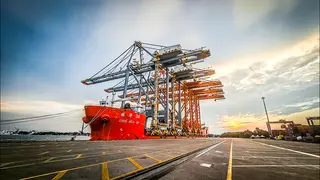The Indian aviation industry has a skilled workforce deficit of 17 per cent. This deficit will increase to over 25 per cent by the end of this fiscal, and is likely to be the same for the next few years, Dhriti Prasanna Mahanta, Vice President, TeamLease Degree Apprenticeship.
He, however explained as the industry grows and matures, this deficit will reduce.
IndiGo has around 1000 aircraft on order, whereas Air India has 470 aircraft in its order book, and Akasa has 76 jets. Earlier this year, the Civil Aviation Minister, Jyotiraditya Scindia said, aircraft with Indian carriers soared by 75 per cent from 400 in 2013-14, to over 700 in 2023. He further added the airport sector would see an investment of Rs one lakh crore and Indian airlines will order an additional 1,200 - 1,400 aircraft in the next four to five years, leading to massive direct and indirect job creation in the country.
Also read: Budget airline Scoot to resume daily Chennai operations
Speaking to businessline, Mahanta said the Indian aviation industry is not only facing a crunch on adequate staffing but also faces an issue with skilled staffing. “Our estimate is that overall, the industry has a deficit of skilled workforce of 17 per cent. This deficit will increase to over 25 per cent by the end of this fiscal, and is likely to be the same for the next few years.”
Aviaion Jobs
The most aspired jobs within the aviation industry are of pilots and cabin crew.
Mahanta said: “While according to the DGCA data, there are over 1000 commercial pilot licenses that were given out last fiscal however, the number of flying hours required by airlines and the experience that the pilots bring along right now is a mismatch.”
For cabin crews, skilling isn’t a problem but the longevity of the career is a problem, he added.
Also read: Will Indian aviation market turn profitable as it heads towards duopoly
Mahanta said, there is a skill gap ranging between 32 per cent - 43 for technical roles, which include service engineers, AI and blockchain-certified professionals among others. Within the non-technical role, the skill gap ranges between 38 per cent - 41 per cent. These jobs include ground staff and handlers along with other airport management staff.
According to him, the Indian aviation industry is one of the highest aspired industries in India. However, it is at a stage where the industry is just about booming, thus, it is facing a demand and supply issue when it comes to staffing. “The IT sector and the BFSI sectors too have faced a similar turn, as the industry matures, these issues will decline but at least in the short term to medium term, we see this issue persisting.”








Comments
Comments have to be in English, and in full sentences. They cannot be abusive or personal. Please abide by our community guidelines for posting your comments.
We have migrated to a new commenting platform. If you are already a registered user of TheHindu Businessline and logged in, you may continue to engage with our articles. If you do not have an account please register and login to post comments. Users can access their older comments by logging into their accounts on Vuukle.